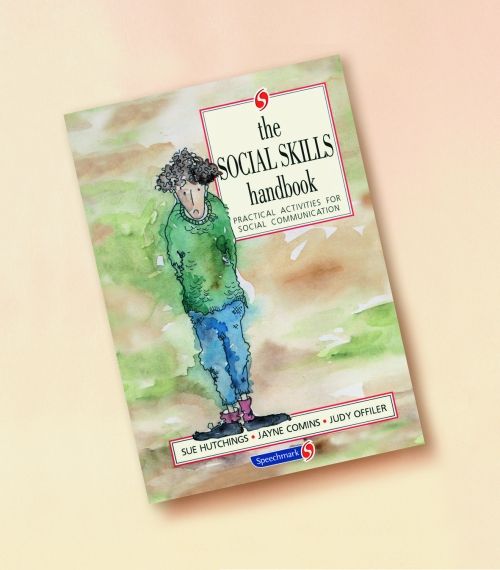 by Sue Hutchings, DipCOT, Jayne Comins, MRCSLT and Judy Offiler, MRCSLT
by Sue Hutchings, DipCOT, Jayne Comins, MRCSLT and Judy Offiler, MRCSLT
A range of useful and adaptable ideas and activities can be found in this practical guide which has been specifically designed for anyone involved in running social skills groups.
Full Description:
This resource provides an abundance of useful and adaptable ideas and activities that can be implemented for anyone involved in running social skills groups.
- Contains 90 excellent ideas for practical activities designed to facilitate social communication.
- A range of skill levels, from basic groupwork tasks to more complex social and realistic activities offered.
Contents: What is Social Communication?; Guidelines for Setting up and Running Groups; Basic Social Communication and Complex Social CommunicationCHARACTERISTICS- Mutual eye gaze - signals interest and a willingness to interct further (last approximately one second)
- Appropriate eye contact between two strangers follows this pattern:
- -Brief eye contact;
- -Look briefly away;
- -Eye contact again;
- -Establish either a positive response (can progress further, may initiate a conversation) or a negative response (uninterest, avoiding interaction).
TOO MUCH- Prolonged intense eye contact is charaterized by a staring, fixed gaze. it may be interpreted as being impolite and rude, particularly among stragers or acquaintances. USe of fixed eye contact if angry can be confrontative and aggressive.
TOO LITTLE
Reduced eye contact may appear as:- Excessive blinking or attempting to cover eyes with hands
- Avoiding eye contact by averting gaze, looking down or away. it may be interpeted as being due to anxiety or shyness and reluctance to make contact and interact. It can be perceived as being insincere and having 'something to hide' (not being able to look someone in the face).
TARGET- Good eye contact helps to guide the pace and co-ordination of a conversation. It produces useful handover cues, indicating 'turns' in a conversation. Looking away when you have finished talking (often done automatically) signials it is the others person'a turn to speak.
170 pages; 8 X 9;spiral bound
ForwordPrefaceAcknowledgementsSECTION 1: What is Social Communication?What do we need to communicate?Main Features of social communicationAcquisition of social communication skillsTheoretical perspectives SummarySECTION 2: Guidelines for Setting up and Running groupsWhy social communication groups?Stages of group developmentSummary
SECTION 3: Basic Social CommunicationWhat are basic social communication skills?- Eye contact
- Facial expressions
- Gesters
- Posture
- Proximity
- Touch
- Appearance
- Listening
- Getting Started
- Developing a relationship
- Self-dislosure
- Empathy
- Positive regard
- Summary of Target Behaviors
- Practical Activities
- Looking and listening
- Saying how you feel
- Conversation in Relationships
- SECTION 4: Complex Social Communication
- What are complex social communication skills?
- Assertivness
- Problem solving
- Telephone skills
- Job interviewing
- Being a team member
- Practical Activities
- Getting things done
- Dealing with work
- Managing problems
- References
- Bibliography
- Index
Stock- Usually ships in 20-30 business days!
|